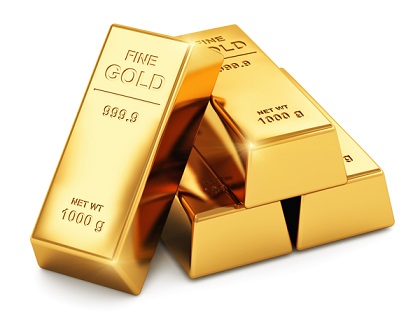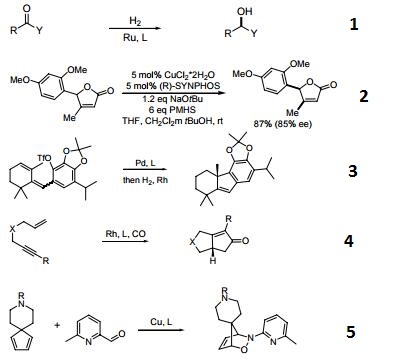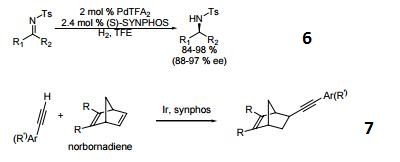GOLD

- CAS No.
- 7440-57-5
- Chemical Name:
- GOLD
- Synonyms
- Au;GC;GOLD POWDER;COLLOIDAL GOLD;GOLD STANDARD SOLUTION;Glod;ci77480;GOLD SOL;Gold wire;Gold leaf
- CBNumber:
- CB9169816
- Molecular Formula:
- Au
- Molecular Weight:
- 196.97
- MOL File:
- 7440-57-5.mol
- MSDS File:
- SDS
- Modify Date:
- 2025/1/27 9:38:02
| Melting point | 1063 °C (lit.) |
|---|---|
| Boiling point | 2808 °C (lit.) |
| Density | 19.3 g/mL at 25 °C (lit.) |
| refractive index |
n |
| Flash point | 4 °C |
| storage temp. | 2-8°C |
| solubility | H2O: soluble |
| form | wire |
| color | purple |
| Specific Gravity | 19.3 |
| PH | 6-8 |
| PH Range | 6 - 8 |
| Resistivity | 2.05 μΩ-cm, 0°C |
| Water Solubility | Soluble in hot sulfuric acid and aqua regia. Insoluble in water and acid. |
| Sensitive | Light Sensitive |
| λmax | 980 nm |
| Merck | 13,4529 |
| Exposure limits | NIOSH: IDLH 25 mg/m3 |
| Stability | Stable. May react with halogens, strong oxidizing agents, ammonia, hydrogen peroxide. Reaction with ammonia or hydrogen peroxide may form explosive materials. |
| CAS DataBase Reference | 7440-57-5(CAS DataBase Reference) |
| EPA Substance Registry System | Gold (7440-57-5) |
| Absorption | 1 at 523nm |
| Modulus of Elasticity | 77.2 GPa, 60% Cold Worked |
|---|---|
| Poissons Ratio | 0.42 |
| Shear Modulus | 27.2 GPa, 60% Cold Worked; Calculated Value |
| Hardness, Vickers | 25 |
SAFETY
Risk and Safety Statements
| Symbol(GHS) |    GHS03,GHS07,GHS08 |
|||||||||
|---|---|---|---|---|---|---|---|---|---|---|
| Signal word | Warning | |||||||||
| Hazard statements | H412 | |||||||||
| Precautionary statements | P273-P501 | |||||||||
| Hazard Codes | Xi,Xn,F,C | |||||||||
| Risk Statements | 36/38-43-67-65-63-48/20-38-11-34-23-52/53 | |||||||||
| Safety Statements | 26-36/37/39-45-62-36/37-61-23 | |||||||||
| RIDADR | UN 1789 8/PG 3 | |||||||||
| WGK Germany | 3 | |||||||||
| RTECS | MD5420000 | |||||||||
| TSCA | Yes | |||||||||
| HS Code | 3822 00 00 | |||||||||
| HazardClass | 6.1 | |||||||||
| PackingGroup | II | |||||||||
| Hazardous Substances Data | 7440-57-5(Hazardous Substances Data) | |||||||||
| NFPA 704 |
|
GOLD price More Price(220)
| Manufacturer | Product number | Product description | CAS number | Packaging | Price | Updated | Buy |
|---|---|---|---|---|---|---|---|
| Sigma-Aldrich(India) | 905720 | Gold nanorods 10?nm diameter, Cy3 and maleimide functionalized, powder | 7440-57-5 | 1.75MG | ₹60877.13 | 2022-06-14 | Buy |
| Sigma-Aldrich(India) | 900479 | Gold nanoparticles 60?nm, NHS ester functionalized, conjugation kit | 7440-57-5 | 1EA | ₹19869 | 2022-06-14 | Buy |
| Sigma-Aldrich(India) | 900478 | Gold nanoparticles 50?nm, NHS ester functionalized, conjugation kit | 7440-57-5 | 1EA | ₹19869 | 2022-06-14 | Buy |
| Sigma-Aldrich(India) | 900477 | Gold nanoparticles 40?nm, NHS ester functionalized, conjugation kit | 7440-57-5 | 1EA | ₹24830.7 | 2022-06-14 | Buy |
| Sigma-Aldrich(India) | 900476 | Gold nanoparticles 30?nm, NHS ester functionalized, conjugation kit | 7440-57-5 | 1EA | ₹24830.7 | 2022-06-14 | Buy |
GOLD Chemical Properties,Uses,Production
Description
Metallic gold is virtually insoluble, except in aqua regia. Gold exists in three primary forms, elemental, Au (I), and Au (III). As a precious metal, it is resistant to ionization and generally considered biologically benign in its elemental state.

Gold is not permitted for use in foods, drugs or cosmetics as a coloring agent in the U.S. However, surface decoration of foods under conditions which preclude consumption is not considered to be a food use and is, therefore, exempt from regulations concerning food use. The use of gold in the decoration of food is more popular in Europe, where, probably as the result of its limited use, its use has been accepted.
Chemical Properties
Gold does not have a distinctive odor at room temperature, but when heated it emits a sweet odor that is detected with difficulty. Chloroauric acid composed of yellow-orange crystalline powder has a faint chlorine odor.
Physical properties
Gold is a soft, malleable, ductile, dense metal with a distinctive yellow color. It is almost aheavy as lead, and both can be cut with a knife. One ounce of gold can be beaten and poundedinto a thin sheet that is only a few molecules thick and that will cover over 300 square feetof surface. Although gold is chemically nonreactive, it will react with chlorine and cyanidesolutions and can be dissolved in aqua regia. Its melting point is 1,064.4°C, its boiling pointis 2,808°C, and its density is 19.3 g/cm3 (as compared to lead’s density of 11.35 g/cm3).
Isotopes
There are a total of 54 isotopes of gold, only one of which is stable: Au-197,which accounts for the element’s total natural existence on Earth. The remaining 53 isotopesare radioactive, are artificially produced in nuclear reactors or particle accelerators,and have half-lives ranging from a few microseconds to a few seconds to a few hours toa few days.
Origin of Name
The name “gold” is Anglo-Saxon as well as from the Sanskrit word javal. The symbol Au is from the Latin word aurum, which means “shining dawn.”
Occurrence
Gold is the 72nd most abundant element and is widely spread around the world, but it is not evenly distributed through the surface of the Earth. It is usually found in a few concentrated regions, sometimes in pure flake and nugget metallic forms. Most of it exists in conjunction with silver ore, quartz (SiO2), and the ores of tellurium, zinc, and copper. About one milligram of gold exists in every ton of seawater (this is about 10 parts of gold per trillion parts of seawater, which amounts to a total of about 79 million tons of gold in solution). No economical method of extracting gold from seawater has been developed to recover this treasury of the sea.
Free metallic gold is found in veins of rocks and in ores of other metals. Alluvial gold (placer deposits) is found in the sand and in the gravel at the bottom of streams where it has been deposited as a result of the movement of water over eons. Most gold is recovered from quartz veins called loads and from ores that are crushed.
Characteristics
Gold is not only pleasing to look at but also pleasing to touch, which made it a desirablemetal for human decoration in prehistoric days. It is still the preferred metal for jewelry makingtoday.
Gold is classed as a heavy, noble metal located just below copper and silver in group 11 ofthe periodic table. Gold is a good conductor of electricity as well as an excellent heat reflectorof infrared radiation, which makes it an efficient thin coating on glass in skyscrapers to reflectthe heat of sunlight.
The purity of gold is measured in “carats” (one carat is equal to one part in twenty-four). Thepurest gold is rated at 24 carats, but it is much too soft to be used for jewelry. Good jewelry ismade from 18-carat gold that is 18 parts gold and six parts alloy metal. Thus, an 18-carat goldring is about 75% pure gold and contains about 25% of another metal, such as nickel or copper,to make it harder and more durable. Other alloy metals mixed with gold are silver, platinum, andpalladium—all used to increase gold’s strength and reduce its cost. Some less expensive jewelrycontains 14 or 10 carats of gold (14/24 or 10/24) as well as some other alloy metals.
Uses
In manufacture of jewelry; in gold plating other metals; as a standard of currency; most frequently alloyed with silver and copper. For use in medicine, see Gold, Radioactive, Colloidal.
Gold has excellent properties as a reflecting mirror. Gold black is utilized as the absorber of light by
depositing on the plane of light incidence of a thermocouple.
Definition
A transition metal that occurs native. It is unreactive and is very ductile and malleable. Gold is used in jewelry, often alloyed with copper, and in electronics and colored glass. Pure gold is 24 carat; 9 carat indicates that 9 parts in 24 consist of gold. Symbol: Au; m.p. 1064.43°C; b.p. 2807°C; r.d. 19.320 (20°C); p.n. 79; r.a.m. 196.96654.
Reactions
- A chiral diphosphine ligand used in the highly-enantioselective hydrogenation of ketoesters, hydroxyketones, ketophosphonates and succinates.
- A ligand used for the dynamic kinetic resolution of α,β−unsaturated lactones via asymmetric copper-catalyzed conjugate reduction.
- Used in the intramolecular Heck reaction for the synthesis of diterpenoids.
- Used in asymmetric Pauson-Khand reaction.
- Used in asymmetric iminonitroso Diels-Alder reaction.
- Palladium catalyzed asymmetric hydrogenation of N-tosyl ketimines.
- Ligand for asymmetric hydroalkynylation of norbornadienes


General Description
Gold nanoparticles PEG 5000 biotin terminated.The preparation of biotinylated gold nanoparticles involves two surface modification steps. First, the carboxyl-terminated alkanethiol is attached to the surface of gold nanoparticles via chemisorption in the presence of a stabilizing agent. This step is followed by the reaction of the carboxyl groups with (+)-biotinyl-3,6,9,-trioxaundecanediamine and 2-(2-aminoethoxy)ethanol.
Hazard
Pure gold, if ingested, can cause skin rash or even a sloughing off of skin. It can also causekidney damage and problems with the formation of white blood cells.
Pharmaceutical Applications
Gold has a long-standing tradition in medicine, as it has been used by many nations for thousands of years. From as early as 2500 BC, Arabians, Chinese and Indians used gold compounds for medicinal purposes. In mediaeval times, the elixir aurum potabile , whichwas an alcoholic mixture of herbs with some gold flakes, was sold by medicine men travelling around Europe and this elixir was supposed to cure most diseases. In the nineteenth century, Na[AuCl4] was reported to treat syphilis, whilst others used it to cure alcoholism. On a more serious note, Koch discovered in 1890 the antibacterial properties of gold cyanide. In vitro experiments with the Mycobacterium tuberculosis showed that gold cyanide has the potential as a tuberculosis therapy. Gold compounds were also investigated for the treatment of RA, when it was believed that RA was caused by bacteria, and many other health problems.
Safety Profile
Poison by intravenous route. Questionable carcinogen with experimental tumorigenic data by implantation. Can form explosive compounds with NH3, NH4OH + aqua regia, H2O2. Incompatible with mixtures containing chlorides, bromides, or iocbdes (if they can generate nascent halogens), some oxidizing materials (especially those containing halogens), alkali cyanides, thiocyanate solutions, and double cyanides. See also GOLD COMPOUNDS.
Structure and conformation
The space lattice of gold belongs to the cubic system, and its face-centered cubic lattice has a lattice constant of a=0.40705 nm.
GOLD Preparation Products And Raw materials
| Supplier | Tel | Country | ProdList | Advantage | Inquiry |
|---|---|---|---|---|---|
| Evans Fine Chem | +91-9821340302 +91-9821340302 | Maharashtra, India | 286 | 58 | Inquiry |
| Arora Matthey Limited | +91-9830058614 +91-9830058614 | West Bengal, India | 24 | 58 | Inquiry |
| INDIAN PLATINUM PRIVATE LIMITED | +91-9322395199 +91-9322395199 | Mumbai, India | 54 | 58 | Inquiry |
| ARRAKIS INDUSTRIES LLP | +91 74995 32711 | Maharashtra, India | 1353 | 58 | Inquiry |
| A.B. Enterprises | +undefined-9223381464 +undefined-7506727253 | Mumbai, India | 19 | 58 | Inquiry |
| Anand Agencies | 91-20-24454597 | Maharashtra, India | 2332 | 58 | Inquiry |
| Growell Resources & Management Pvt. Ltd. (Growell) | 91-22-22665522 | Maharashtra, India | 13 | 58 | Inquiry |
| Dhara Industries (Formerly known as Karolinska Industries) | 91-9322395199 | Maharashtra, India | 97 | 58 | Inquiry |
| CLEARSYNTH LABS LTD. | +91-22-45045900 | Hyderabad, India | 6257 | 58 | Inquiry |
| Otto Chemie Pvt. Ltd. | +91 9820041841 | Mumbai, India | 5870 | 58 | Inquiry |
Related articles
- The Refining methods of gold
- After initial production, gold is often subsequently refined industrially by the Wohlwill process, which is based on electroly....
- May 31,2024
- Does Gold Rust or Tarnish?
- Pure gold, being a noble precious metal, stands as the least reactive among all metals. In simple terms, pure gold does not ru....
- Mar 21,2024
- Industrial Applications of Gold
- Gold’s chemical and physical properties make it a very versatile element. Its noncorrosivenature provides protection as platin....
- Oct 8,2019
Related Qustion
- Q:Does pure gold oxidise?
- A:Yes, Gold can lose electrons under special circumstances and can therefore be oxidised. However, gold is not oxidised by oxyge....
- Mar 14,2024
7440-57-5(GOLD)Related Search:
1of4
chevron_right




